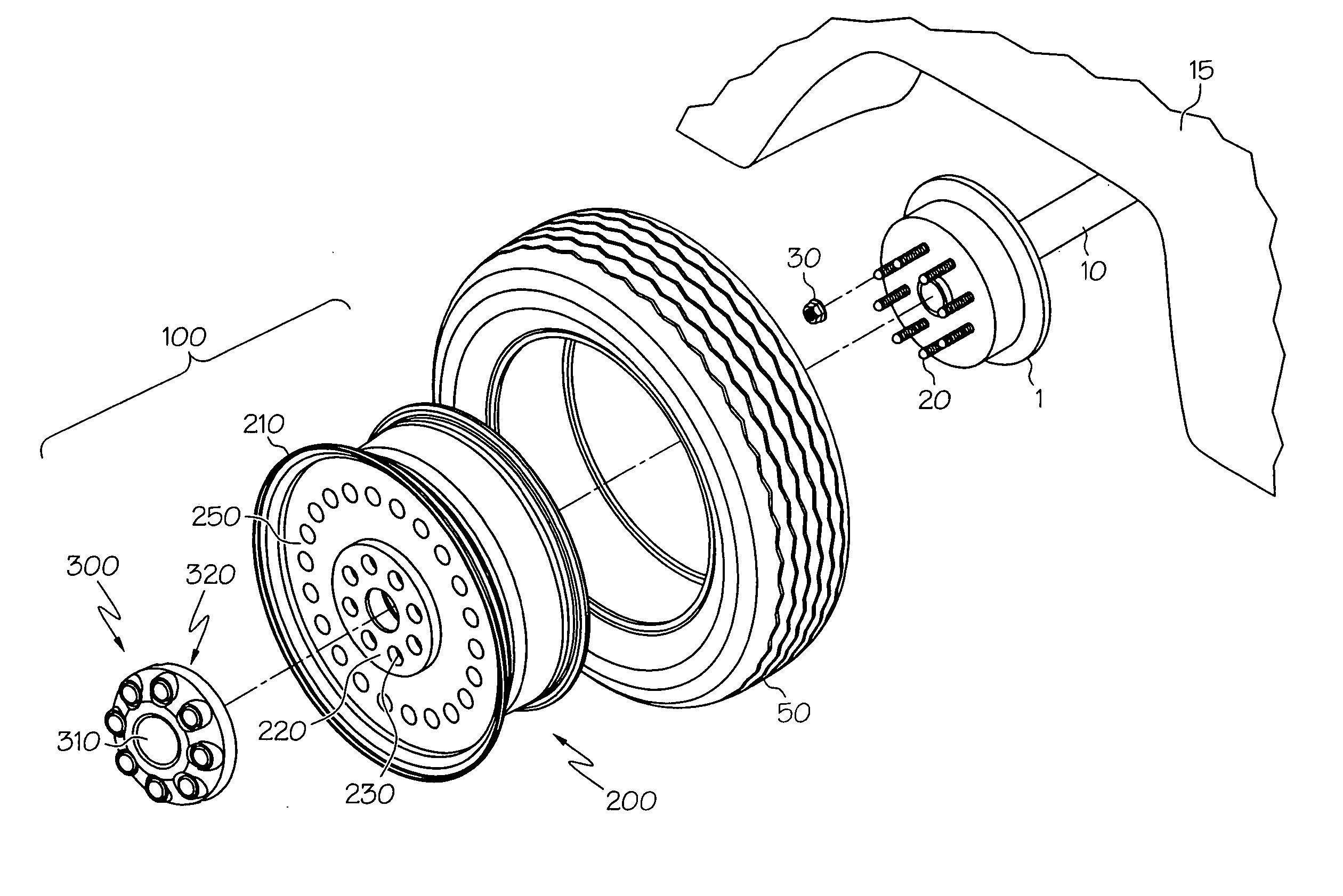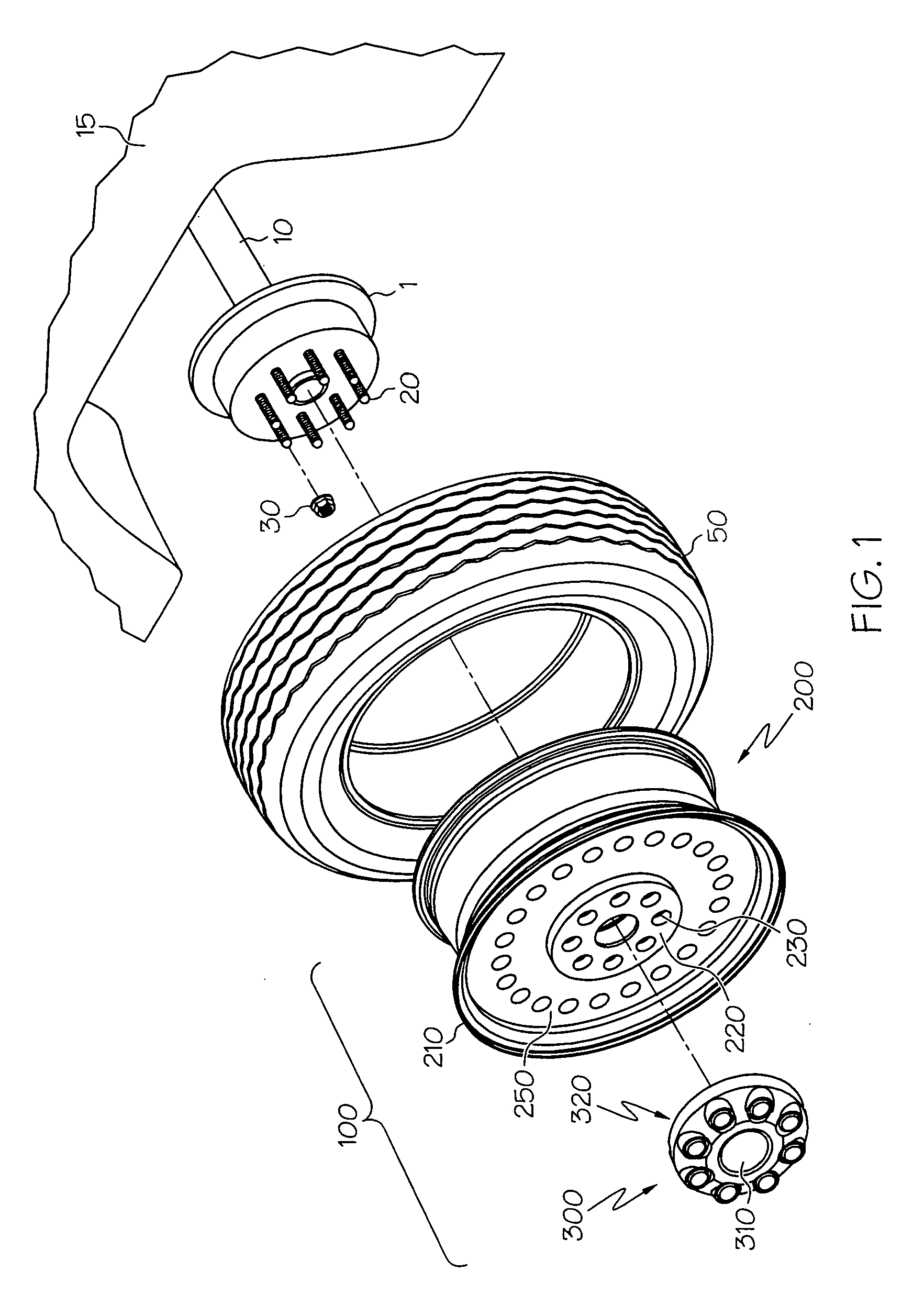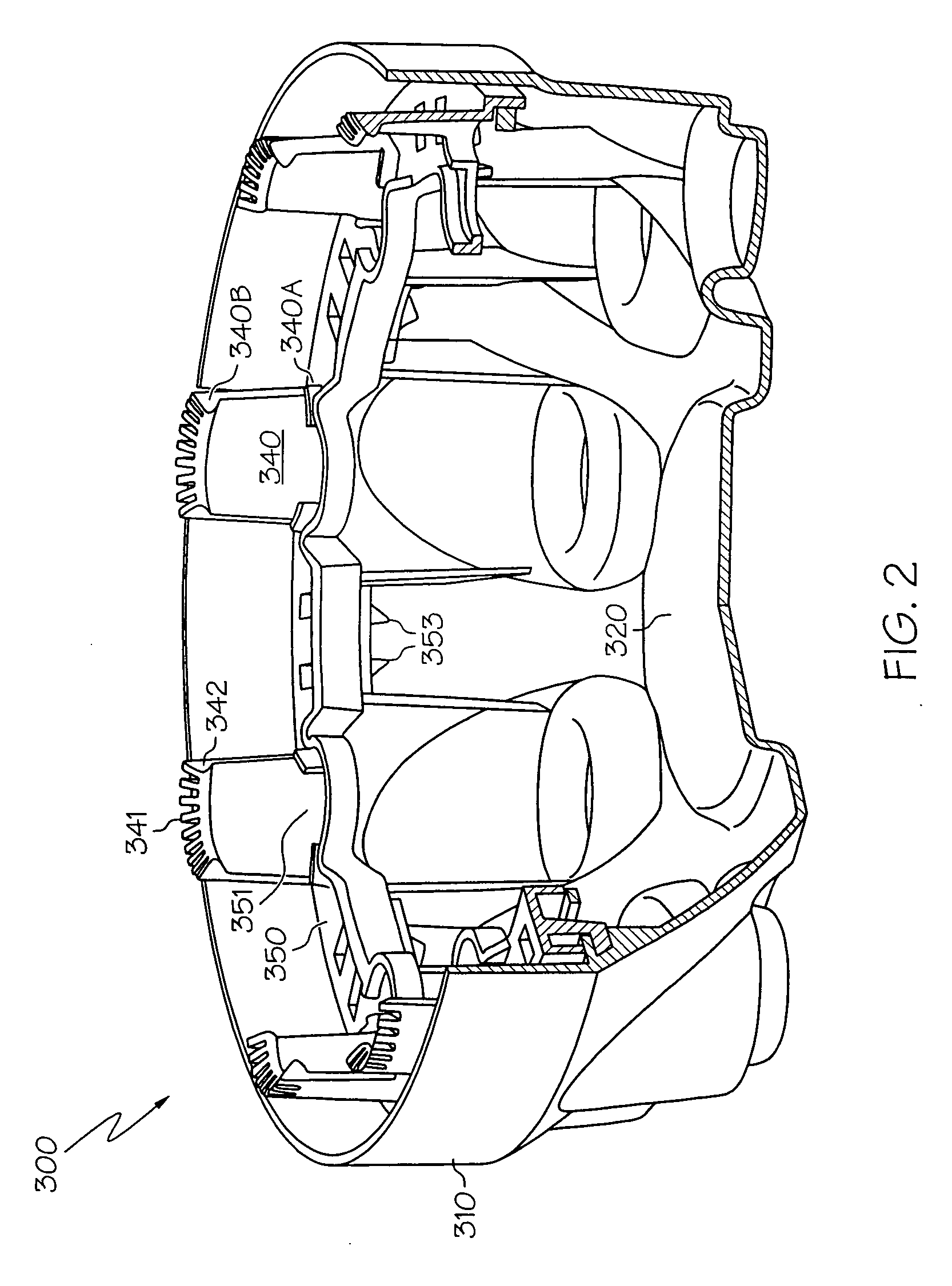Hub cap
a hubcap and hub technology, applied in the direction of disc wheels, wheel protection, vehicle components, etc., can solve the problems of reduced grip on the lug nuts, increased manufacturing costs, and shortened service life of the lug cap, so as to reduce the susceptibility of member breakage, enhance flexural resistance, and increase assembly tolerance
- Summary
- Abstract
- Description
- Claims
- Application Information
AI Technical Summary
Benefits of technology
Problems solved by technology
Method used
Image
Examples
Embodiment Construction
[0029]FIG. 1 is an outward-facing exploded view of a wheel assembly 100 with wheel 200 and hub cap 300, both configured to be mounted to a hub 1 and axle 10 of vehicle 15. The wheel 200 includes a rim (or flange) section 210, central hub section 220 with lug-receiving holes 230 and central bore 240, and web (or spoke) section 250. Hub 1 includes holes therein (not shown) to allow threaded placement of lugs 20 which in turn allow threaded attachment of lug nuts 30. The corresponding holes 230 formed in wheel 200 allow placement of lugs 20 through the aligned holes, while accompanying lug nuts 30 secure the wheel 200 to the hub 1 through the lugs 20. A tire 50 is also mounted onto the rim section 210 of wheel 200.
[0030] In a preferred (although not necessary) embodiment, the hub cap 300 is made from a non-metallic material, such as plastic or related resin, examples of which may include acrylonitrile-butadiene-styrene (ABS), polycarbonate or a combination thereof. The material may fu...
PUM
 Login to View More
Login to View More Abstract
Description
Claims
Application Information
 Login to View More
Login to View More - R&D
- Intellectual Property
- Life Sciences
- Materials
- Tech Scout
- Unparalleled Data Quality
- Higher Quality Content
- 60% Fewer Hallucinations
Browse by: Latest US Patents, China's latest patents, Technical Efficacy Thesaurus, Application Domain, Technology Topic, Popular Technical Reports.
© 2025 PatSnap. All rights reserved.Legal|Privacy policy|Modern Slavery Act Transparency Statement|Sitemap|About US| Contact US: help@patsnap.com



